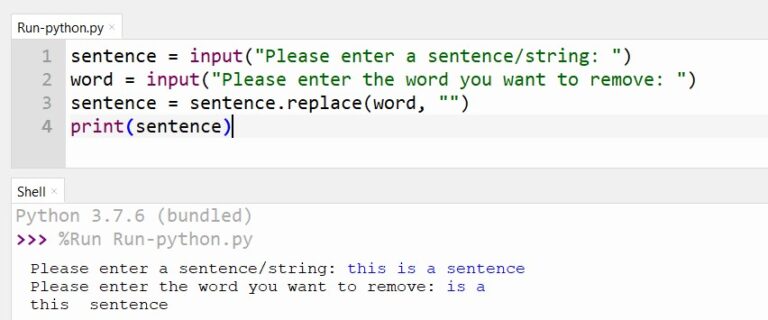
strip() syntax is as follows: string.strip(characters) It is a Python built-in function that trims a string by removing all leading and trailing whitespaces. The strip() method is the most commonly accepted method to remove whitespaces in Python.
Python strip code#
Since all the methods have the same syntax I have explained the concepts first and added a code snipped of all the methods in the end. So it is best to check for and remove whitespaces in strings and Python comes with 3 inbuilt methods to remove whitespaces. In some cases, it could break the logic of your code as well. Since Python considers whitespaces as a character, they would also be printed in case you decide to print the string. While dealing with strings in files or user input strings, whitespaces are a common problem. Python trim essentially means removing whitespaces from a string. Why do we use Python to trim whitespaces? Why do we use Python to trim whitespaces?.However, if you are here to learn, I recommend you follow along with the tutorial. If you are here looking for the best solution use this link. We also look at all the built-in methods to remove whitespaces in a string.
Python strip how to#
Out of these three, using the replace() method to strip is much easier than others because it is easier to comprehend and use.In this short tutorial, we look at how to use Python to trim a string.

In conclusion, there are three common ways to strip characters from a string object in Python. You can assign empty values to both x and y to strip the characters. This table could be a dictionary or a mapping table describing the characters you want to replace. You can also use the anslate() method to remove the particular number of characters from a Python string. Use the anslate() Method to Strip Multiple Characters in Python String Output: python is my programming language

Original_string = "!(pyth000on is mYy = "" We can also experiment with a longer sentence. Then we have used the re.sub() function that takes three arguments: regular expression pattern, the string you want to replace it with, and the source string.įrom the output, we can see that it has removed the characters. Here, we have defined a string consisting of characters we want to remove from our source string. New_string = re.sub(pattern, "", original_string) This function is a part of the re module, which consists of regular expressions or regex operations that you can utilize.įor this function, let’s consider a different example: import re This is another common way to strip the characters from strings in Python. Use the re.sub() Function to Strip Multiple Characters in Python String If you pass 2, the function will replace two occurrences of that character. The third argument, count, is an optional parameter that indicates the number of occurrences of that character you wish to replace. The new character argument implies the character you are looking to replace with. The first argument, old character, represents that character you want to replace. The string is the string from which you want to strip the characters. string.replace(old character, new character, count) Inside the loop, you will check for the characters you want to remove and replace them with no space using the str.replace() method. Next, you will use a for loop to literature through the source string. Now, assign the original string to a new string to keep the original string intact. What you will do is create a string of characters you want to remove from the string. Removing Vowel Characters from a String in Python (Video 26) Hello New_string = new_string.replace(character, "") Let’s look at the code and its output first: original_string = "!(Hell0o)"


The str.replace() method provides the stripping functionality. Use str.replace() to Strip Multiple Characters in Python String In this tutorial, we will look at several methods and examples of striping multiple characters from any position in Python. Hence, we will store our stripped string in a new string in each example. Stripping means that you should be able to remove characters from any position.īefore starting with stripping, you must keep in mind that Python string objects are immutable. Stripping characters in a string object is an important task you must know as a programmer.


 0 kommentar(er)
0 kommentar(er)
